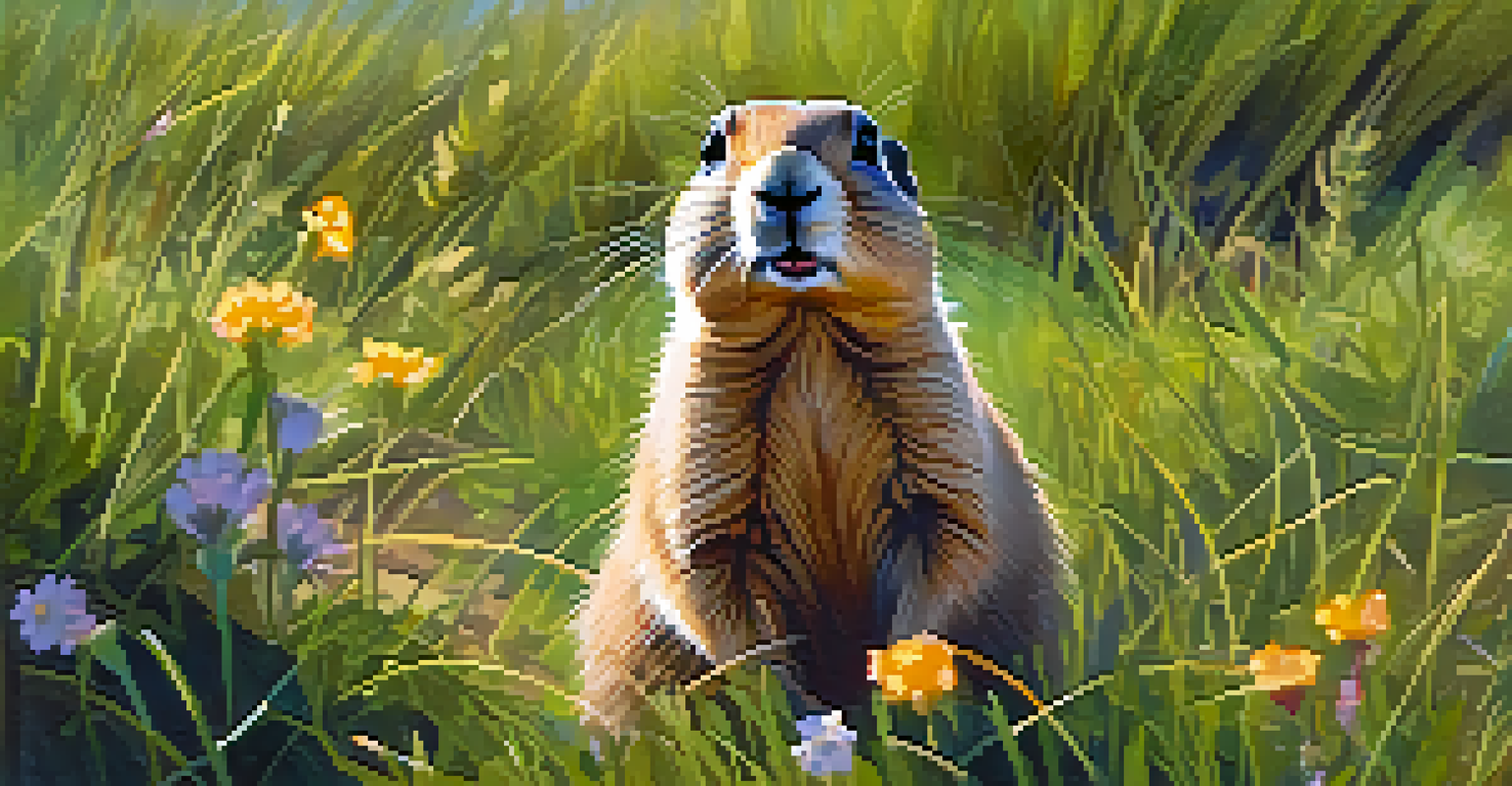Boulder's Unique Habitats: Biodiversity and Conservation Needs

Understanding Boulder's Diverse Ecosystems
Boulder, Colorado, is home to a stunning array of ecosystems, each hosting unique flora and fauna. From the foothills of the Rockies to the plains, these habitats create a mosaic of life that contributes to the region's biodiversity. This diversity is not just beautiful; it plays a crucial role in maintaining ecological balance and supporting wildlife.
We won't have a society if we destroy the environment.
The varying elevations and climates in Boulder allow for different types of habitats, including grasslands, wetlands, and forests. Each habitat supports distinct species that have adapted to their specific environments. For example, the foothills provide shelter to mountain goats, while the wetlands are vital for migratory birds.
Understanding these ecosystems is the first step towards appreciating their intricate connections. When we recognize how each habitat contributes to the overall health of the environment, we can better advocate for their protection and conservation.
The Importance of Biodiversity in Boulder
Biodiversity is essential for the resilience of ecosystems, particularly in a place as varied as Boulder. A rich variety of species contributes to the stability of ecosystems, making them more robust against environmental changes. For instance, diverse plant life can better withstand droughts and support a wider range of animal species.

Moreover, biodiversity enhances ecosystem services that humans rely on, such as clean air, water purification, and pollination of crops. When we lose species, we jeopardize these vital services that sustain our quality of life. Protecting Boulder's biodiversity means safeguarding our own future and the health of our communities.
Boulder's Biodiversity Matters
The diverse ecosystems in Boulder are crucial for maintaining ecological balance and supporting wildlife.
Ultimately, biodiversity is not just an environmental concern; it's intertwined with our well-being. By fostering an appreciation for the variety of life in Boulder, we can encourage more people to participate in conservation efforts and embrace sustainable practices.
Key Species of Boulder and Their Roles
Boulder's unique habitats are home to several key species that play pivotal roles in their ecosystems. For example, the black-tailed prairie dog is a keystone species, meaning its presence or absence significantly impacts other species. Their burrowing activities create habitats for various animals and help aerate the soil, promoting plant growth.
Biodiversity is the foundation of ecosystem services that we depend on for our well-being.
Similarly, the river otter is another important player in Boulder's ecosystems. They help maintain fish populations by preying on weaker individuals, thus ensuring a healthy aquatic environment. Protecting these key species is essential for preserving the ecological balance in Boulder.
Each species, big or small, contributes to the intricate web of life in Boulder. By understanding their roles, we can better appreciate the need for conservation and work together to protect these invaluable creatures.
Threats to Boulder's Unique Habitats
While Boulder boasts rich biodiversity, it faces several threats that endanger its unique habitats. Urban development is one of the most significant challenges, as expanding cities encroach on natural landscapes, fragmenting ecosystems. This not only displaces wildlife but also disrupts the ecological processes that sustain these environments.
Climate change poses another major threat, altering weather patterns and affecting species distributions. For instance, rising temperatures can push some species to higher elevations, while others may struggle to survive. These changes can lead to a loss of biodiversity, further complicating conservation efforts.
Threats to Unique Habitats
Urban development, climate change, and invasive species pose significant risks to Boulder's unique ecosystems.
Additionally, invasive species are a growing concern in Boulder. Non-native plants and animals can outcompete local species for resources, leading to declines in native populations. Addressing these threats is crucial for the long-term health of Boulder's ecosystems and requires a community-wide effort.
Conservation Initiatives in Boulder
Boulder is actively engaged in various conservation initiatives aimed at protecting its unique habitats and biodiversity. Local organizations and the city government collaborate to implement programs focused on habitat restoration, species monitoring, and public education. These efforts are crucial in ensuring that Boulder's ecosystems remain resilient against the threats they face.
One notable initiative is the Boulder Open Space and Mountain Parks program, which aims to conserve large areas of open space for wildlife and recreation. This program not only protects habitats but also provides opportunities for residents and visitors to connect with nature, fostering a sense of stewardship.
Community involvement is key to the success of these conservation efforts. Through volunteer programs, educational workshops, and public events, Boulder's residents are empowered to contribute to the preservation of their natural surroundings. Together, these initiatives create a stronger foundation for protecting Boulder's ecological treasures.
The Role of Community in Conservation
The community plays a vital role in the success of conservation efforts in Boulder. Local residents can act as stewards of their environment by participating in conservation programs, reporting wildlife sightings, or even volunteering for restoration projects. These actions foster a deeper connection to the natural world and encourage a culture of conservation.
Education is also a powerful tool in engaging the community. By raising awareness about the importance of biodiversity and the threats faced by local habitats, residents can become advocates for change. Schools, nonprofits, and local organizations often host workshops and events to educate the public about conservation efforts and the role they can play.
Community Drives Conservation
Local residents play a vital role in conservation efforts, actively engaging in programs and advocating for sustainable practices.
Ultimately, a strong community foundation can lead to lasting change. When residents come together with a shared purpose, they amplify their impact, ensuring that Boulder's unique habitats are preserved for future generations to enjoy.
How You Can Help Boulder's Ecosystems
There are numerous ways individuals can contribute to the conservation of Boulder's unique ecosystems. Simple actions, such as reducing water usage, planting native gardens, or using environmentally friendly products, can collectively make a significant impact. These small changes in daily habits help to minimize our ecological footprint and support local wildlife.
Participating in local conservation events is another great way to get involved. Many organizations in Boulder organize clean-up days, tree planting events, and educational hikes. These activities not only benefit the environment but also foster community connections and a sense of shared responsibility.

Finally, advocating for conservation policies and supporting local organizations can amplify your impact even further. Whether through donations, volunteering, or spreading the word, your contributions can help ensure that Boulder's diverse habitats continue to thrive for years to come.